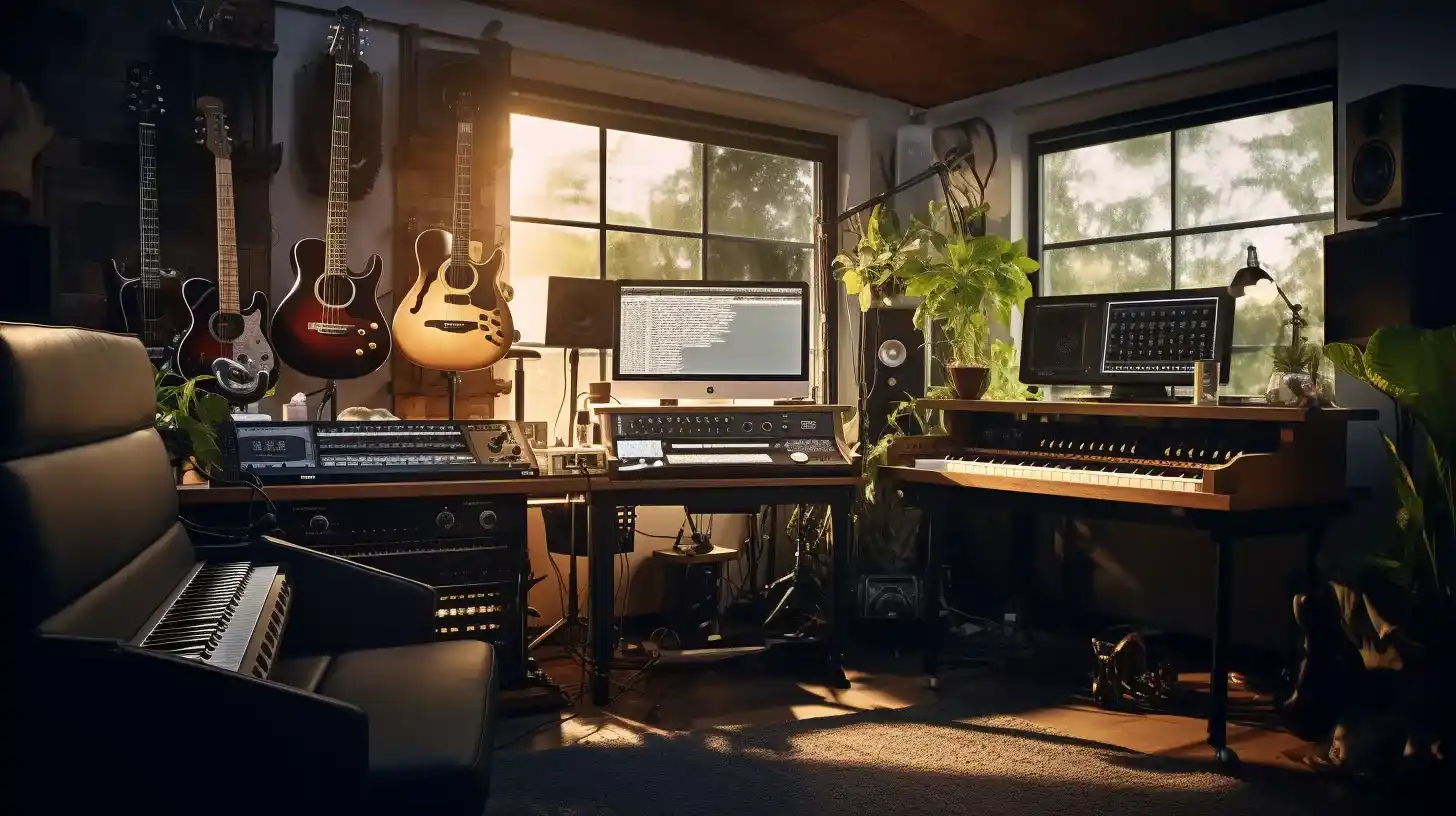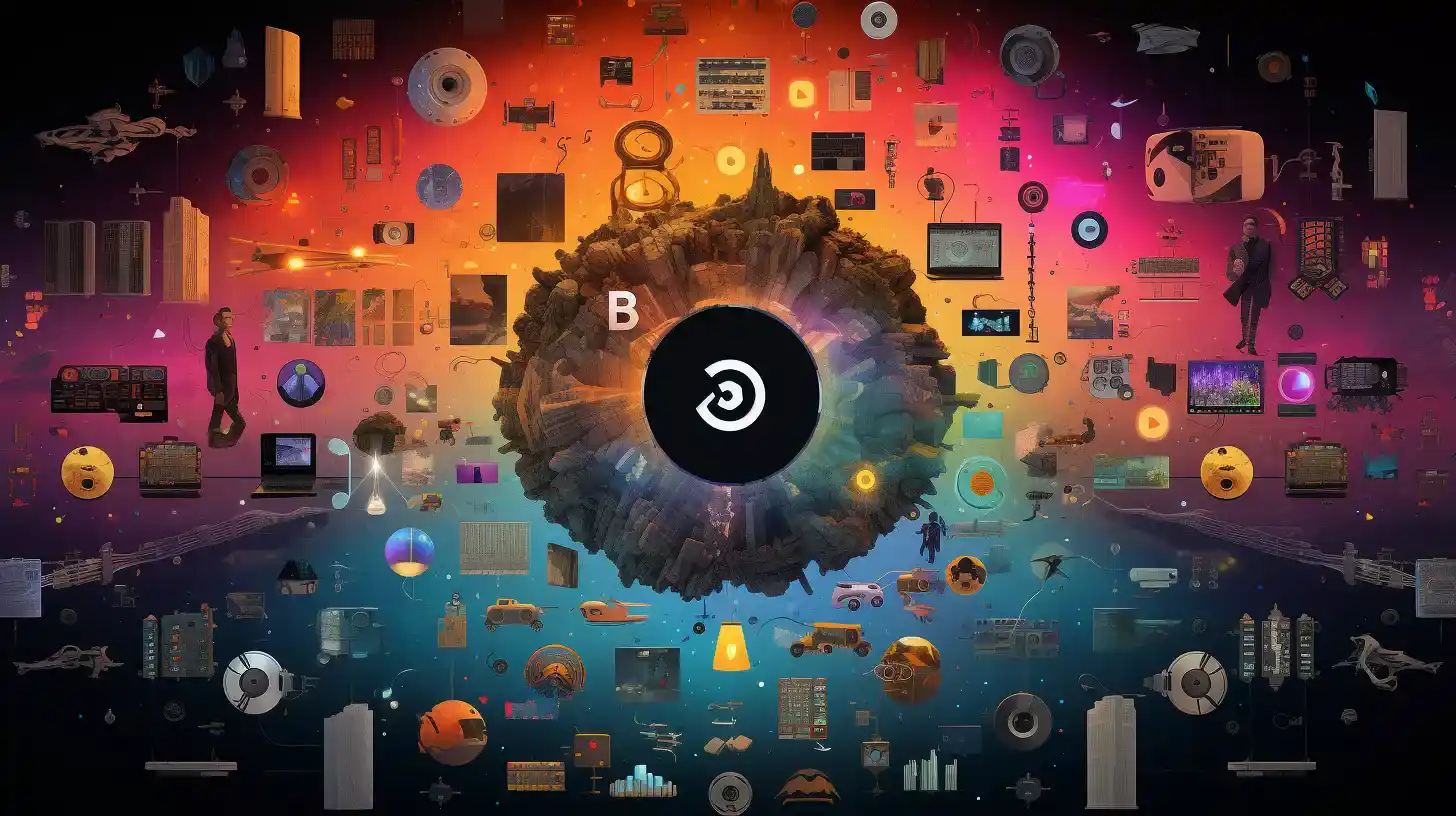Table of Contents
The era of AI-powered mastering has dawned, reshaping the music production landscape and offering musicians a transformative alternative to traditional mastering engineers.
This revolutionary technology allows for endless tweaking, delivers results within minutes, and comes at a fraction of the cost associated with human mastering engineers. In a world where creativity meets efficiency, AI mastering is emerging as a powerful force.
Unleashing the Potential of AI-powered Mastering
In a recent development, Apple introduced Mastering Assistant in version 10.8 of Logic Pro, its flagship digital audio workstation (DAW). This feature, embedded in the update, propelled AI-powered mastering into the spotlight. Musicians using Logic Pro gained access to this capability for free, enabling them to seamlessly integrate AI mastering into their creative process on laptops, desktops, or iPads.

The resounding approval of AI mastering came from various corners, including a guitar teacher who had reservations about guitars made after 1975. The consensus formed—AI-powered mastering was not just a concept; it was a tangible and effective tool. This revelation prompted a deeper exploration into the capabilities of AI mastering and its potential impact on music production.
The Journey to Pro-Level Sound
The author of this article embarked on a musical journey in 2023, setting up a home music studio for under a thousand dollars. The gear’s affordability and high quality compared to the analog era allowed the author to delve into tracking and mix engineering. However, the elusive pro-level radio sheen remained a challenge, leading to the exploration of mastering—a discipline often considered a dark art.
While mastering was initially viewed as a complex and mystical process handled by seasoned mastering engineers, the advent of AI-powered mastering tools promised a demystification of this art. The author, torn between the desire for a polished sound and the complexity of mastering, considered hiring a mastering engineer. However, the emergence of AI tools that claimed to save time, and money, and unravel the mysteries of mastering presented a compelling alternative.
Crafting a Musical Experiment
To put these AI mastering systems to the test, the author decided to create a song—a tale of a lovable loser performing an unexpected late ’80s hair metal act before a crowd of country music fans. The track’s production involved meticulous recording using a Universal Audio Volt 2 interface and an Audio-Technica 2035 mic, along with MIDI keyboard parts created using Logic’s Drummer tool.
As the author navigated the complexities of recording and mixing, the quest for that elusive pro-level sheen persisted. The stage was set for AI-powered mastering to step in and potentially elevate the track to new heights.
AI Everywhere: A Landscape of Options
The realm of AI-powered mastering has witnessed rapid expansion, with various players entering the arena. Notable mentions include Apple’s Mastering Assistant, LANDR, Waves, Brainworx, Master Channel, Maastr, Bandlab, and iZotope’s Ozone. Each offers unique features, and the prevalence of AI mastering has sparked debates about its ethical implications—whether it’s acceptable to potentially replace human mastering engineers.
Bandlab, a web-based service, provides a free option, appealing to bedroom studio enthusiasts and indie musicians. On the other end of the spectrum, iZotope’s Ozone stands out as a comprehensive and sophisticated tool, albeit with a higher price tag. The varying options cater to musicians with different preferences and budgets.
Navigating the AI Mastering Landscape

LANDR, a pioneer in AI mastering, operates on a subscription model, offering plans that range from $20 to $40 per month. Its cloud-based system initially involved uploading mixed tracks, receiving mastered versions, and facilitating revision tweaks through a question-based interface. The plugin version, running locally on the user’s machine, provides more control and faster results.
iZotope’s Ozone, despite its higher cost, offers unparalleled customization options. Musicians who relish diving into intricate settings will find Ozone to be a treasure trove, allowing control over every element of an entire effects chain.
Apple’s Mastering Assistant, part of Logic Pro, takes a different approach with a more “hands-off” philosophy. Designed for users within the Apple ecosystem, it offers a user-friendly interface with limited controls, emphasizing simplicity and ease of use.
Mastering Insights: AI as an Educational Tool
One of the significant advantages of AI-powered mastering tools lies in their ability to serve as educational tools. They analyze tracks comprehensively, providing custom EQ curves aligned with genre or style norms. This feedback is invaluable, offering insights into potential improvements or adjustments needed for a more polished sound.
As the AI systems apply EQ adjustments behind the scenes, some, like Apple’s Mastering Assistant and iZotope’s Ozone, expose the EQ curves to users. This transparency enhances the educational aspect, allowing musicians to understand the changes being made and facilitating informed decision-making.
Case Study: Mastering Assistant’s Approach
Apple’s Mastering Assistant, available exclusively for Mac and iPad users within Logic Pro, exemplifies a “hands-off” design philosophy. While the mastering chain remains hidden from users, it provides tasteful style and EQ controls. The tool analyzes entire tracks, offering a nuanced approach compared to systems that use only a few seconds of the loudest material.
Mastering Assistant’s simplicity extends to a one-panel interface with controls like loudness adjustment, an exciter for top-end saturation, and a stereo spread knob. Despite its simplicity, the tool incorporates essential features such as a True Peak meter, LUFS meter, and correlation meter, enhancing the user’s understanding of the track’s characteristics.
Bandlab: Exploring Free AI Mastering
Bandlab, a web-only service, stands out as a free AI mastering option, making it an attractive choice for musicians on a budget. While it lacks the extensive customization options of premium tools, it provides a streamlined experience with four style options—Universal, Fire, Clarity, and Tape.
For musicians seeking a no-cost introduction to AI mastering, Bandlab offers a convenient solution. The platform analyzes tracks, generates mastered versions, and allows users to preview and download the results, making it a user-friendly entry point to the world of AI mastering.
The Art and Science of AI Mastering
The discussion around AI-powered mastering raises questions about its impact on human labor and the ethical considerations of automating processes traditionally handled by skilled professionals. While AI systems offer efficiency, cost-effectiveness, and educational benefits, the debate continues whether they complement or replace the human touch in music production.
In conclusion, the advent of AI-powered mastering signifies a paradigm shift in music production. Musicians now have a diverse range of tools at their disposal, each offering unique features and catering to different preferences. Whether viewed as a cost-saving solution, a time-efficient tool, or an educational resource, AI-powered mastering has undeniably become an integral part of the modern music production landscape.
As technology continues to evolve, musicians will navigate the evolving intersection of creativity and artificial intelligence, unlocking new possibilities in the realm of sound.